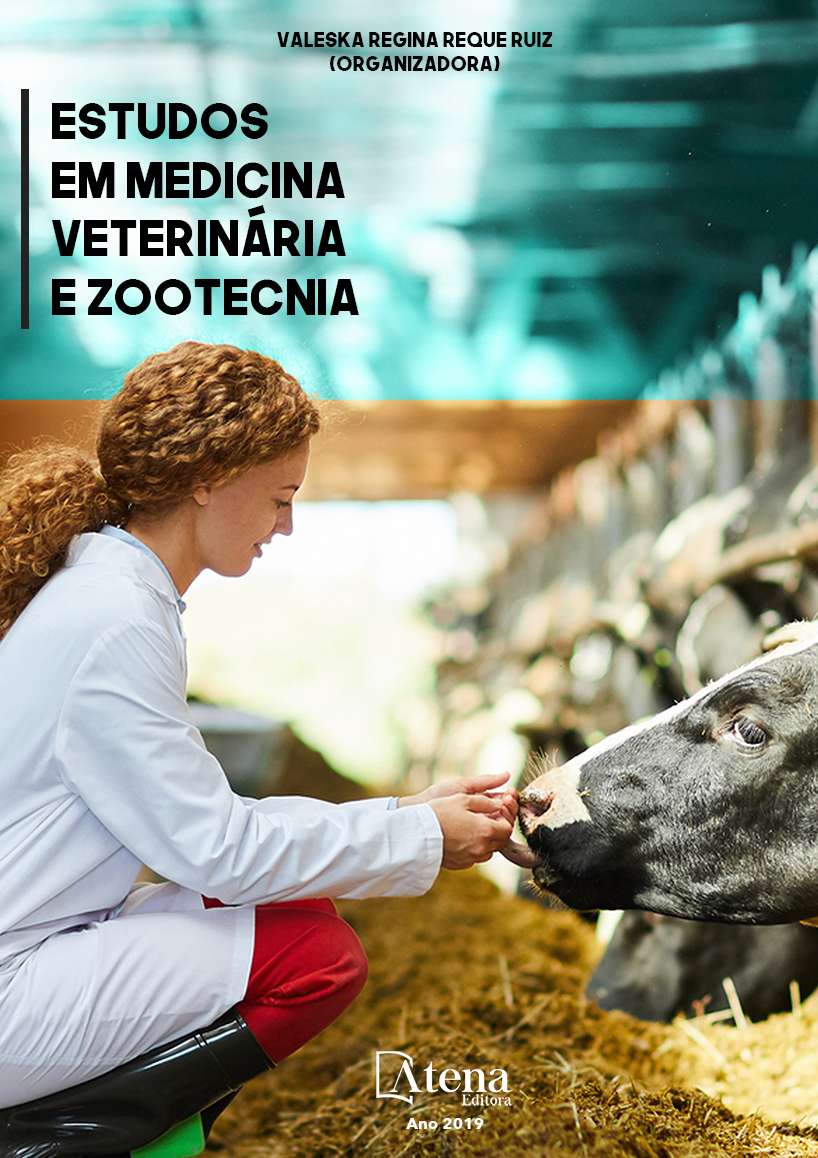
OCORRÊNCIA DE INTOXICAÇÃO PELO FUNGO Ramaria flavo-brunnescens EM BOVINOS NA REGIÃO NORTE DO PARANÁ
No início do outono do ano de 2015,
86 bovinos de cria, foram manejados para
uma área de sistema silvipastoril (consórcio
marandu e Eucalyptus sp) com 45,6 hectares
e sem divisão. Quatro dias após a entrada na
pastagem, observaram-se dois animais com
perda da extremidade da cauda, e quatro
dias após, mais quatro animais apresentaram
a mesma lesão, totalizando seis animais
afetados. Nenhum outro sinal clínico foi
observado nos animais acometidos. O quadro
clínico foi sugestivo do mal do eucalipto. Neste
momento optou-se por retirar os animais desta
pastagem e não houve mais casos novos. Os
animais acometidos foram tratados, por 3 dias,
com tintura de iodo a 10% para a cauterização
dos tecidos vivos e hemorrágicos e, após este
período, 2 animais que ainda apresentavam
hemorragias recorrentes, passaram por um
processo de caudectomia parcial. Em Sistemas
Silvipastoris com o Eucalyptus sp, ocorrem
as condições favoráveis para o crescimento
do fungo Ramaria flavo-brunnescens e a sua
ingestão é responsável pela doença do “mau
do eucalipto”. O seu princípio tóxico continua
desconhecido, mas o mecanismo proposto
é semelhante ao que acontece nos casos de
ergotismo, apresentando sinais clínicos de
hiperemia na borda casco e conjuntiva ocular,
hifema e opacidade da córnea, arrasamento
do epitélio lingual, além da perda dos pelos ou
queda da extremidade da cauda. Atualmente,
os sistemas integrados de produção, como o
silvipastoril, vêm se difundindo grandemente
por todo o Brasil, e o mau do eucalipto pode vir
a aparecer em regiões onde não havia relatos
de sua ocorrência.
OCORRÊNCIA DE INTOXICAÇÃO PELO FUNGO Ramaria flavo-brunnescens EM BOVINOS NA REGIÃO NORTE DO PARANÁ
-
DOI: 10.22533/at.ed.53819240519
-
Palavras-chave: Intoxicação; Ramaria flavo-brunnescens, cogumelo tóxico, sistema silvipastoril
-
Keywords: Intoxication; Ramaria flavo-brunnescens, toxic mushroom, silvipastoris systems.
-
Abstract:
At the of the fall of 2015, 86 breeding cattle were managed for an area
of silvopastoral system (Marandu consortium and Eucalyptus sp) with 45.6 hectares
and no division. Four days after entering the pasture, two animals with loss of the
tail end were observed, and four days later, four animals presented the same lesion,
totaling six affected animals. No other clinical signs were observed in the affected
animals. Clinical signs are suggestive of intoxication by Ramaria flavo-brunnescens.
At the moment it was decided to remove the animals from this pasture and there were
no new cases. The affected animals were treated for 3 days with 10% iodine tincture
for the cauterization of the living and hemorrhagic tissues and, after this period, 2
animals that still had recurrent hemorrhages underwent a partial caudectomy process.
In Silvipastoris Systems with Eucalyptus sp, the favorable conditions for the growth of
the fungus Ramaria flavo-brunnescens occur and its ingestion is responsible for the
poisoning. Its toxic principle remains unknown, but the proposed mechanism is similar
to what happens in cases of ergotism, presenting clinical signs of hyperemia at the
hull edge and conjunctiva ocular, hyphema and opacity of the cornea, lingual epithelial
destruction, as well as loss of hair or fall of the tail end. Currently, integrated production
systems, such as silvipastoril, have been spreading widely throughout Brazil, and
eucalyptus malaria may appear in regions where there are no reports of its occurrence
-
Número de páginas: 15
- Weverton Batista Leite
- Rodrigo Toniolo Costa
- Renato Toniolo Costa
- Marcelo Alves da Silva


